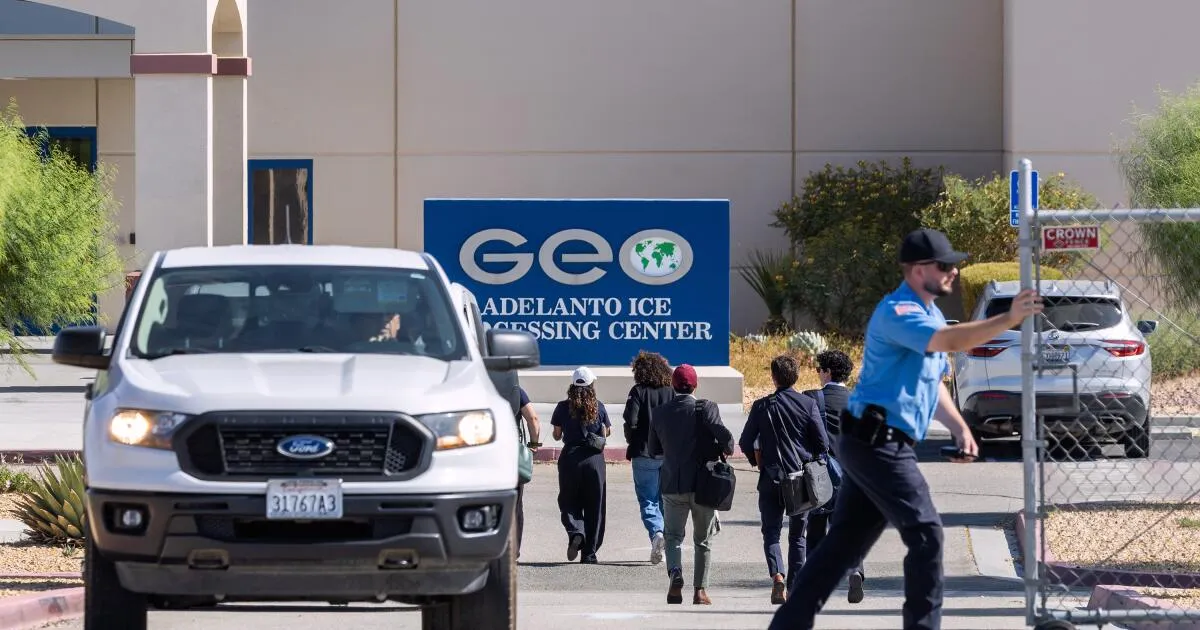
As Los Angeles has emerged as the focal point of President Trump’s stringent measures against undocumented immigrants, Department of Homeland Security Secretary Kristi Noem recently visited the city for a press conference. During her address, she emphasized that the government's primary aim is to “bring in criminals that have been out on our streets for too long.” However, recent data suggests that the majority of those arrested in the days leading up to her June 12 appearance were not convicted criminals.
From June 1 to June 10, a total of 722 individuals were arrested in the Los Angeles region as part of the early crackdown, according to Immigration and Customs Enforcement (ICE) data. This information was obtained by the Deportation Data Project, a comprehensive repository of enforcement data at UC Berkeley Law. An analysis conducted by The Times revealed that a staggering 69% of those arrested during this period had no prior criminal convictions, while 58% had never faced any criminal charges.
The median age of those arrested was 38, and the demographic profile showed that nearly half were Mexican nationals. Additionally, 16% hailed from Guatemala and 8% from El Salvador. Los Angeles Mayor Karen Bass voiced her concerns to The Times, stating, “They’re not going after drug kingpins; they’re chasing hardworking people through swap meets and Home Depot parking lots.” She described the palpable fear in the community, where families are hesitant to dine out and children worry about their parents not returning from errands, all due to the visibility of ICE operations.
Despite the Trump administration's claims of targeting the “worst of the worst,” data from ICE indicates that the percentage of individuals arrested without a criminal conviction is increasing as such sweeps become more commonplace in Los Angeles. The data spans a seven-county area, from San Luis Obispo in the north to Orange County in the south. Experts have pointed out that these arrests predominantly occur in public spaces, including car washes, parking lots, and street vending locations, further fueling allegations of racial profiling.
In response to these allegations, DHS officials maintain that their operations are meticulously targeted. “DHS enforcement operations are highly targeted, and officers do their due diligence,” asserted DHS Assistant Secretary Tricia McLaughlin. She emphasized that agents are trained to ask specific questions to determine individuals' immigration status and potential removability.
On a national scale, the number of individuals arrested without criminal convictions has surged dramatically. According to nonpublic data from the Cato Institute, which covers the fiscal year 2025, a significant majority of those detained are nonviolent offenders. “ICE is not primarily detaining people who are public safety threats,” noted David Bier, director of immigration studies at the Cato Institute, underscoring that serious violent offenders constitute only 7% of those taken into custody.
While ICE has not disclosed specific data regarding the criminal records of detainees, the Cato Institute has found that roughly 90% of those arrested had no prior convictions for violent or property crimes, with the most common offenses being immigration violations and traffic-related issues. Bier emphasized the importance of this information, particularly in light of the DHS's assertions that its deportation efforts focus on individuals with serious criminal backgrounds.
The shift in ICE's approach to arrests is evident, with five times more immigrants without criminal convictions being apprehended in the last fiscal year compared to the same timeframe in 2017. In June alone, ICE arrested approximately 6,000 individuals without criminal convictions. While McLaughlin claimed that “75% of those arrests under this Administration have been of illegal aliens with criminal convictions or pending charges,” public data suggests this figure has dropped in recent weeks.
Over the past fiscal year, ICE booked 204,297 individuals into detention facilities, making this figure a reliable estimate of arrests. Notably, prior to Trump's second term, 38% of those booked had not been convicted of a crime, but this number rose to 63% just five months into his presidency. The top offenses leading to arrest included immigration violations, traffic offenses, assaults, and drug-related charges.
Bier attributes this shift to actions taken by White House Deputy Chief of Staff Stephen Miller, who reportedly instructed ICE officials to broaden their scope beyond existing target lists, leading to arrests in public spaces like Home Depot and 7-Eleven convenience stores. These wider sweeps have strained the capacity of the detention system, where detainees have reported substandard conditions, including moldy food and insufficient clothing changes.
As of June 15, the number of individuals held in detention had surged by 42% to 56,397, nearing historical highs. With the Trump administration seeking to fund 100,000 detention beds, experts predict that this number could continue to rise, further affecting immigrant communities across the nation.